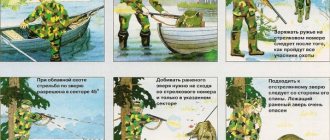REMINDER - RULES OF CONDUCT ON ICE.
REMINDER
rules of conduct on ice.
Every year, several dozen people die on the reservoirs of the region in late autumn and spring.
This period is the most dangerous.
The thickness of the ice on the reservoir is not the same everywhere. Thin ice is found: near the coast, in the area of rapids, at the confluence of rivers or on bends, bends, near frozen objects, underground sources, in places where warm waters and sewage drains drain into reservoirs. Ice under snow and snowdrifts is extremely dangerous and unreliable. The danger comes from ice holes, ice holes, cracks, and holes that are covered with a thin layer of ice.
SAFETY MEASURES ON ICE:
- when crossing on ice, you must use equipped ice crossings or paved trails, and if they are not available, before moving on the ice, you should outline the route and make sure the strength of the ice with a stick.
- if the ice is fragile, you must stop moving and retrace your steps, taking the first steps without lifting your feet from the ice surface.
- It is strictly forbidden to test the strength of the ice by kicking.
— while driving on ice, you should pay attention to its surface, avoid dangerous places and areas covered with a thick layer of snow. Particular care must be taken in places where fast currents, springs, bushes and grass protrude to the surface, streams flow into the reservoir and warm wastewater from industrial enterprises flows in.
— ice with a greenish tint is safe for pedestrians to cross
and at least 7 centimeters thick.
— when crossing on ice, you must follow each other at a distance of 5-6 m and be ready to provide immediate assistance to those walking in front.
- transportation of small but heavy loads is carried out on sleds or other devices with the largest possible area of support on the ice surface
— use of ice skating areas on reservoirs is permitted only after a thorough check of the strength of the ice. The ice thickness must be at least 12 cm, and for public skating at least 25 cm
— when crossing a body of water on ice on skis, it is recommended to use a paved track, and if there is none, before moving on virgin soil, you should unfasten the ski fastenings and remove the loops of the ski poles from your hands. If you have a backpack or satchel, you need to take it on one shoulder
- the distance between skiers should be 5-6 m. While moving on the ice, the skier going first checks the strength of the ice with blows from sticks and monitors its character
— while fishing, you cannot punch many holes in a limited area, jump and run on the ice, or gather in large groups
— each fisherman is recommended to have with him a life-saving device in the form of a cord 12-15 m long, a load of 400-500 g is attached to one end, and a loop is made at the other.
BASIC RULES OF CONDUCT ON ICE:
Before going on the ice:
- make sure it is durable,
- use established ice trails,
(if they are absent, stand on the shore, outline the route), take a strong long stick with you, and go around suspicious places.
- if typical signs of weak ice appear: cracking, bending of the ice under your feet, water on the surface of the ice, immediately return to the shore, walk with your feet wide apart, without lifting them from the surface of the ice, or, as a last resort, crawl.
— do not allow people and cargo to accumulate in one place on the ice.
- exclude cases of being on ice in bad weather: fog, snowfall, rain, and also at night.
- go around rifts, ice holes, ice holes, ice edges. If you are unsure of the safety of being on the ice, it is better to bypass the dangerous area along the shore.
What if the ice breaks?
-do not panic,
drop heavy things, stay afloat, call for help
- lean on the edge of the ice floe with your arms spread wide apart, if there is a strong current, bend your legs, take off your shoes that have accumulated water
- try not to break off the edge of the ice, lean on it with your chest, lift one by one
and put your feet on the ice
- keep your head high above the surface of the water, constantly call for help
In a shallow body of water?
- push off sharply from the bottom and try to get out onto the ice
- move along the bottom to the shore, breaking through the ice in front of you
What if someone fell through the ice before your eyes?
- lie on your stomach, crawl to the hole and give the victim a long stick, rope, belt or scarf
- if you don’t have anything like this at hand, lie down on the ice in a chain, holding each other’s legs
- no more than two people should provide assistance.
FIRST AID:
-The victim must be taken indoors as quickly as possible, take off his wet clothes and change into dry ones.
-If the victim shows signs of general freezing, a warm bath with a water temperature of 37-38º C is very useful.
-To restore blood circulation, the body must be rubbed with flannel or cleanly washed hands, moistening them with diluted alcohol or water (rubbing with snow is not recommended, as the time of exposure to cold on the tissue increases),
-Place the victim in bed and give him a hot drink.
-Further treatment should be carried out by medical professionals.
-If the accident occurred far from home, assistance must be provided on the spot: share dry clothes, make a fire, warm the victim and bring him to the premises as quickly as possible.
Time of safe stay of a person in water:
At a water temperature of 24° C, safe stay time: 7-9 hours.
At a water temperature of 5-15 ° C - from 3.5 hours to 4.5 hours.
A water temperature of 2-3 ° C becomes unsafe for humans after 10-15 minutes.
At a water temperature of minus 2° C, rigor rigor can occur within 5-8 minutes.
TELEPHONES FOR HELP:
Unified Rescue Service 112;01;
EDDS Buturlinsky municipal district 8(831)72 5-21-93.
Precautionary measures
Adults should tell children that young ice that forms during mild frosts is dangerous. The ice surface is considered durable if its thickness is at least 7 cm. At an ice rink it should be 10-12 cm, with a large crowd of people - 25 cm. Even near the bank of a seemingly harmless river, the depth can be several meters.
Matte ice of a yellowish, greenish tint, which was formed as a result of thawing and subsequent freezing, is the strongest. The most dangerous color is white, formed by freezing snowflakes. If the ice crackles under your feet, it is better to move away from this place .
Memo
- If children are on the ice, the distance between them should be at least 3 m.
- You can’t walk on a frozen pond when it’s dark, there’s a snowstorm or it’s raining. Under such conditions, it will be very difficult for rescuers to provide assistance to those in trouble.
- You should not be on the ice alone. It is necessary for the child to be constantly in someone’s field of vision.
- Children should be reminded that ice thickness cannot be tested by kicking or hitting with a stick.
- If water appears on the frozen surface or cracks are visible, you must return immediately, preferably along the same route.
- If you have a backpack with you, throw it over your shoulder and take your hands out of your pockets. The skis are not secured, and the loops of the ski poles are left hanging freely. All this so that you can quickly free yourself from those things that will drag you to the bottom or impede your movements.
- The further from the coast, the thinner the ice and the stronger the current. A person who fails is quickly sucked in and it will be more difficult to save him.
- It is better to bypass areas where the surface is dark and covered with snow; ice holes are possible there.
- You should not play on ice near enterprises, factories where wastewater is discharged or where a river flows into a lake or another river.
- Places where there are frozen snags or boats, near pontoons and piers are considered dangerous. There is high turbulence up and down from the bridge supports; it is better to be 100 m away from them.
- In spring, the river is dangerous during ice drift. You cannot stand at the edge of a steep bank, ride on ice floes, or be on bridges or dams.
- You can only skate in special places that are checked and equipped.
Children's safety on the street and rules of conduct in public places
Rules of behavior on reservoirs in winter
Safety rules on water bodies in winter.
The winter period has come, all water bodies are covered with thin ice. Ice becomes strong only after continuous frosty days set in. Short-term thaws are dangerous, as this leads to a loss of strength. Everyone is familiar with the basic rules of safe behavior on water bodies, but not everyone follows them. These are the people who, without waiting for the required ice strength, forgetting about prohibitory signs and indicators, go out onto the ice fields to dashingly skate, try out hockey sticks, sit with a fishing rod over the hole, or even take a shortcut and fearlessly cross a body of water. directly, without thinking about the consequences.
According to statistics, in most cases of death on reservoirs in the autumn-winter period, the victims of ice are men - ice fishing enthusiasts, children left unattended, as well as those who neglect the advice of rescuers and go out on weak, loose and fragile ice.
Every citizen is obliged to strictly observe order and caution when participating in various events on the ice. Children need to be especially closely Ice before the onset of stable frosts is fragile. Bonded by the evening or night cold, it is still able to withstand a small load, but during the day, quickly heating up from the melt water seeping through it, it becomes porous and very weak.
As a rule, during the formation of ice, water bodies freeze unevenly, in parts: first near the shore, in shallow water, in bays protected from the wind, and then in the middle. On lakes and ponds (on all bodies of water with stagnant water, especially on those into which not a single stream flows, in which there is no bottom river bed or underwater springs), ice appears earlier than on rivers, where the current delays ice formation. On the same body of water you can find alternating ice, which, with the same thickness, have different strength and carrying capacity.
The main condition for a person’s safe stay on ice is that the ice thickness corresponds to the applied load:
— safe ice thickness for one person: at least 7 cm;
— safe ice thickness for crossing on foot: 15 cm or more;
— safe ice thickness for cars to pass through: at least 30 cm.
Time of safe stay of a person in water:
— at a water temperature of 24° C, safe stay time: 7-9 hours,
— at a water temperature of 5-15 ° C — from 3.5 hours: to 4.5 hours;
- a water temperature of 2-3° C turns out to be fatal for humans after 10-15 minutes;
- at a water temperature of minus 2° C, death can occur in 5-8 minutes.
Rules of conduct on ice.
To avoid trouble, you must follow the basic rules of behavior on ice.
- Under no circumstances should you go out on the ice at night or in poor visibility (fog, rain, snowfall).
- When crossing the river, you should use ice crossings.
- You cannot test the strength of ice by kicking it. If, after the first strong blow with a hard object or a ski pole, even a little water appears, this means that the ice is thin and cannot be walked on. In this case, you should immediately follow your own trail to the shore, with sliding steps, without lifting your feet from the ice and placing them shoulder-width apart so that the load is distributed over a larger area. The same is done in case of warning cracking of ice and formation of cracks in it.
- If you are forced to cross a body of water, it is safest to stick to the beaten paths or follow an already laid ski track. But if they are not there, before going down onto the ice, you need to look around very carefully and outline the upcoming route.
- When crossing a body of water in a group, it is necessary to maintain a distance of 5-6 m from each other. It is better to cross a frozen river (lake) on skis, in this case: unfasten the ski fastenings so that, if necessary, they can be quickly removed; Hold ski poles in your hands without looping them around your hands, so that in case of danger you can immediately throw them away.
- When going to a frozen pond, you need to take with you a strong cord 20-25 meters long with a large blind loop at the end and a weight. The weight will help to throw the cord to a comrade who has fallen into the water; the loop is needed so that the victim can hold on more securely by threading it through his armpits.
- In emergency situations, it is very important to maintain maximum composure, get rid of fear, assess the situation as a whole and outline the safest course of action. Indecision and confusion are usually explained by elementary illiteracy. Not knowing what to do to save himself, a person falls into numbness or panic, giving way to despair, a feeling of doom. Being prepared to take decisive and skillful action yourself often means saving your life.
In cases where you fall into a hole.
Your actions:
- do not panic, do not make sudden movements;
- breathe as deeply and slowly as possible, make continuous movements with your legs as if you were pedaling a bicycle, while calling for help, because there may be people nearby;
- spread your arms to the sides and try to cling to the edge of the ice, giving your body a horizontal position in the direction of the flow;
- try to carefully lay your chest on the edge of the ice and throw one leg, and then the other onto the ice, use sharp objects (knife, nails), if the ice has stood, roll, slowly crawl to the shore;
- crawl in the direction from which you came, because the ice here has already been tested for strength;
- Once you get ashore, do not stop so as not to freeze completely;
- run to the nearest warm room.
In cases where your help is needed: arm yourself with any long stick, board, pole or rope (scarf, belt). Crawl, spreading your arms and legs wide, pushing the life-saving equipment in front of you, carefully moving towards the hole. Stop a few meters away from the person in the water and throw him a life-saving device. Carefully pull the victim onto the ice and crawl together from a distance out of the danger zone. Take the victim to a warm place. Once warm, immediately change him into dry clothes, rubbing the frostbitten areas with alcohol if necessary, and give him warm tea; under no circumstances give him alcohol, this can be fatal. If the nearest room is too far away, make a fire right on the spot, dry the victim’s clothes by giving him some of your things. If the victim is severely frostbitten, rub him with alcohol.
Winter rescue equipment is:
Rescue board. The length of the board is 5-8 meters, width - 120 cm. A loop is attached to one end, and a rope 30 to 40 m long is attached to the other. Rescuers on the shore tie the end of the rope to a stationary object, then crawl along the ice to the victim and give him the end boards with a loop, helping to get out of the water.
Rescue pole. Length – 5-8 meters. A hemp nylon rope 40 m long is attached to the end of the pole. The rescuer ties the rope on the shore, approaches to a safe distance, gives the pole to the victim, and helps him get out of the water.
Rescue rope. Length – 25-30 m with large, up to 70 cm long, loops at both ends. The rescuer puts a loop on his left hand, and with his right hand he takes another loop and, having made two or three circular swings, throws it to the drowning person. Having caught the noose, the drowning person puts it over his head under his arm, after which the rescuer pulls him to the shore.
Escape ladder. Length – 3-6 m, width – 50-70 cm. Made from spruce, pine or duralumin tubes with sealed ends. Used by rescuers in the same way as a rescue board. In all cases, it is advisable that the rescuer first secure himself.
Tools at hand. In emergency situations, improvised means can be used to assist a drowning person: logs, poles, skis, shields, ropes, trouser belts, personal clothing, etc.
If a person falls through the ice before your eyes: Immediately report the incident by phone: 01, 02, 112 for cellular subscribers.
BE CAREFUL AND CAREFUL!
THIN ICE IS DANGEROUS!








